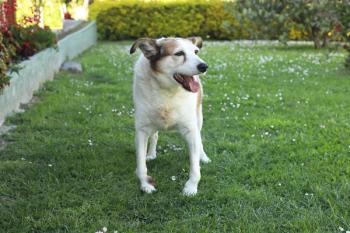
Pyrethroid toxicity in felines: prognosis good to guarded
The most common toxicity presenting at our referral center is pyrethroid exposure in felines.
The most common toxicity presenting at our referral center is pyrethroid exposure in felines.
The pyrethroids are synthesized chemicals used widely as insecticidesboth in agriculture and in households.
Table 1 shows the "family members" of the pyrethroids. Differentformulations including spot-ons, sprays, dips, shampoos and aerosols areused to control fleas, ticks and other insect infestations both outsideand inside the house. Home pest control companies are replacing organophosphatesand carbamates with pyrethroid compounds.
What are they?
Pyrethroids are lipophilic substances rapidly absorbed after oral ordermal exposures. The liver and plasma esterases hydrolyze the ester linkagesof these insecticides decreasing their toxicity. The metabolites are thenexcreted in the urine.
In the May 2003 issue of Chemosphere (Kakko, T. Toimela, H. Tahti, pages475-480) report that membrane ATPases are one target of the neurotoxic effectof pyrethroid compounds.
The effects on the nervous system are expressed in the axonal membraneby altering the activity of sodium ion channels. The sodium conductanceis prolonged, inducing depolarizing afterpotentials. This effect resultsin repetitive nerve firing, and thus the neurologic signs of this toxicity.
Uses
Most brands of permethrin "spot-on" products are labeled for"use in dogs only." These permethrin compounds may be obtainedover-the-counter in grocery stores or pet stores. Inappropriate use ofsuch products in cats may lead to toxic signs and even death. The clinicalsigns occur a few minutes to hours after exposure and consist of depression,salivation, vomiting, muscle tremor, hyperexcitability, seizures, ataxia,dyspnea, anorexia, weakness, prostration and death.
Cats may exhibit ear flicking, contractions of the superficial cutaneousmuscles and paw shaking. Cats or dogs with liver dysfunction or portosystemicshunts are at greater risk for signs of toxicity due to decreased hydrolysisof the pyrethroid ester linkages.
The diagnosis of pyrethroid toxicosis is mainly based on the history,the clinical signs and evaluation of differential diagnoses. The clinicalsigns of pyrethroid toxicity may be confused with exposure to organophosphatesor carbamate intoxication.
Photo 1 shows a cat where an over-the-counter topical formulation hasbeen applied by the owners. Cholinesterase enzyme activity is normal incase of pyrethroid exposure, but may be decreased with organophosphate orcarbamate poisoning.
Attempted measurement of pyrethroids in blood or tissue samples is usuallyfutile. Plasma and tissue esterases hydrolyze the compounds before assayscan detect them.
Feline presentation
Most cats affected by pyrethroid poisoning are presented as an emergency.The patient should be stabilized if hypothermia or hyperthermia is present.
There is no specific antidote for this toxicity. Seizure activity maydevelop and should be treated with the intravenous administration of diazepam(0.5- 1.0 mg/kg), propofol (initial dose of 1 mg/kg, then constant rateinfusion of 0.1 mg/kg/minute for one to two days), or phenobarbital (1.0- 5.0 with intravenous methocarbamol at a dose of 44 to 220 mg/kg). Halfthe dose is given rapidly and the remaining dosage is given to effect (RichardsonJA. Permethrin Spot-On Toxicoses in Cats. J. Vet. Emerg. Critical Care,10(2), June 2000, 103-106).
Once tremors and seizures are controlled, follow up with oral methocarbamolat 61 to 132 mg/kg/day divided every eight to 12 hours may be considered.
Gas anesthesia
Gas anesthesia is another option for controlling refractory seizures.
The hair and skin should be washed with soap or detergent after dermalexposure. The use of an emetic is indicated shortly (within one hour) afteroral ingestion of pyrethroid insecticide. The gastrointestinal absorptioncan be decreased with the oral administration of activated charcoal (2 mg/kg),preferably in association with a cathartic such as magnesium sulfate (250mg/kg), or 70 percent sorbitol at a dosage of 3 ml/kg body weight.
Hypersalivation may be controlled with atropine at a dosage of 0.02to 0.04 mg/kg body weight given intramuscularly or subcutaneously. Careshould be taken to avoid excessive administration of atropine sulfate, whichcan result in central nervous system stimulation and tachycardia.
The prognosis of pyrethroid poisoning in cats is guarded to good. Thebest way to avoid serious problems in cats is by educating cat owners. Productsthat are labeled "for dogs only" should not be used on cats.
Newsletter
From exam room tips to practice management insights, get trusted veterinary news delivered straight to your inbox—subscribe to dvm360.






